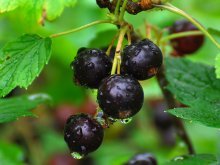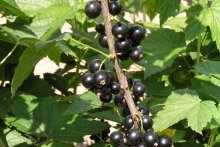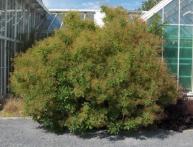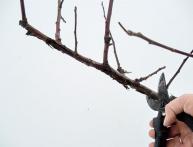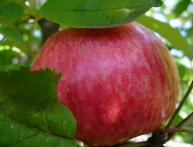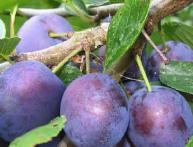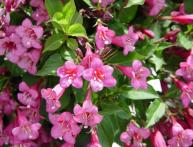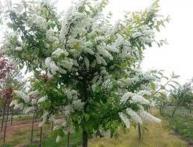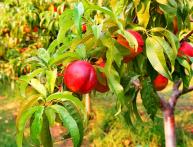Planting currants in spring with cuttings and seedlings in spring
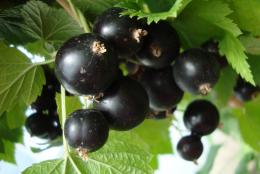
Currant - a valuable berry crop from the Currant genus of the Gooseberry family. The ancestors of all modern varieties are the European and Siberian subspecies of wild blackcurrant. We will try to understand the characteristics of the plant, where currants will best grow on the site and the rules for planting currants in the spring.
Content:
- Features of black currant
- How to plant currant cuttings in spring
- Spring planting of blackcurrant seedlings
Features of black currant
Currant is a perennial deciduous shrub. The average height of the bushes is 150 cm. The root system is fibrous. The main part of the roots is located at a depth of no more than half a meter. The currant bush consists of shoots of different ages. New stems emerge from the buds of the underground portion of the stem. The leaves are large, matte, green. They appear from the buds in spring.
The bud break time is from the third ten days of April to mid-May. The leaves of the currant are three-five-lobed. The edges of the leaf blades are jagged. After the buds open, it is time to bloom. The flowers are small, no more than 5 - 6 mm in diameter, collected in inflorescences, racemes up to 10 - 12 cm long, with an average of 8 - 10 flowers in each inflorescence. The length of the inflorescence is from 5 to 12 cm.
In place of flowers, fragrant berries are formed. When ripe, the skin is black or brown. The average diameter of the berry is up to 10 mm. Under the skin in the pulp are located seeds, on average their number is from 3 to 5.Currants are valued for their high content of nutrients not only in the berries, but also in the leaves.
The berries contain a sufficient amount of sugars for a pleasant sweet and sour taste. In addition, they contain vitamins:
- WITH
- A
- E
- IN 1
- AT 2
- AT 6
- TO
- RR
The beneficial properties of black currant berries are due to the content of potassium, manganese, iron, phosphorus and other substances and chemical compounds. In amateur gardening, currants are most often propagated by cuttings. We will try to find out whether it is possible to plant not only cuttings, but also ready-made ones seedlings currants in the spring and how best to do it.
How to plant currant cuttings in spring

In some cases, propagating black currants by cuttings is much more profitable than purchasing seedlings. This is explained by the fact that an adult bush grown from a cutting will produce berries with the same properties as the mother plant. Thus, if there is already a successful variety on the site that needs to be propagated, then you can prepare not one, but several cuttings from it.
Although cuttings for spring planting can be cut in the fall, it is more convenient to do this in early spring, combining the procedure with spring pruning of the bush. In addition, there is no need to store planting material in winter.
For spring planting, cuttings are taken from mature shoots, at least 0.6 cm thick. The length of the cuttings should not be less than 15 cm. In general, it is believed that the longer the shoot, the better the seedling develops, but it is also not worth taking cuttings longer than 20 cm. The upper cut is made straight, at a distance of approximately one cm above the upper bud. The lower cut is oblique.
If Cherenkov If 2 - 3 are prepared, then you can plant them in holes for rooting, but if there are a lot of cuttings, then you need to dig a trench for planting.For spring planting of currant cuttings, it is advisable to dig a trench and fill it in the fall.
It is filled with a mixture of compost and rotted humus. Once the soil has completely thawed and warmed up a little, you can begin planting the cuttings.
It is preferable to plant immediately after the layer of thawed soil is 20 cm; the moister the soil is at this moment, the more successful rooting will be. Cuttings prepared for planting can be immediately planted in a trench, or this can be done after lightly dusting the lower ends with any root formation stimulator.
Place the cuttings at a distance of 15 - 20 cm. Install them obliquely, embedding them into the ground 3 - 4 cm with the lower end into the ground. Two buds are left above the surface of the earth, the first should be directly above the surface itself. In order for root formation to proceed without problems, it is important to maintain a supply of moisture in the soil. To do this, the ground is mulched with a layer of compost of at least 3 cm.
Further care consists of regular watering and loosening the soil. By autumn, rooting and formation of small individual bushes occurs. Need them for next spring plant to a permanent place, like any purchased blackcurrant seedling.
Spring planting of blackcurrant seedlings
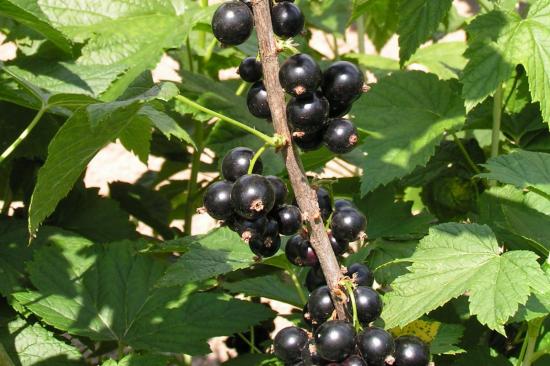
The best time for spring planting is the green cone stage; it is undesirable to plant currant bushes when the buds have already opened. This is usually done in April - early May. When choosing a permanent place for spring planting of currants, you need to remember that it is a fairly moisture-loving plant. In the wild, currant bushes most often grow in damp lowlands or along river banks.
Therefore, a lower damp place on the site is suitable for it.It is important that it is protected from the wind, especially in winter. The composition of fertile loamy soils is best. It doesn’t matter whether the seedling is purchased or grown from cuttings, you need to prepare a hole for planting it. Its size must be at least 40 cm in depth and 50 cm in width.
If in advance the soil was not fertilized for spring planting, the hole will have to be filled with fertilizers. To do this, add to the bottom:
- 8 kg humus
- 60 g potassium salt
- 100 g granulated superphosphate
The seedling is placed in the hole slightly obliquely, the roots are covered with earth, periodically compacting it. After planting, the root collar of the currant bush should be underground, at a depth of 6 - 7 cm. This position of the root collar accelerates survival and contributes to better further formation of the currant bush.
The newly planted bush needs to be watered, after which the tree trunk area is mulched with peat and humus. Immediately after the bush is planted, watered and the soil is covered with mulch, it needs to be trimmed. All ground shoots are shortened so that 2 to 4 buds remain on them. When planting currants in the spring, the seedlings need to be fed approximately in the third week after planting.
15 grams of nitrogen fertilizers are applied under the bushes. Throughout the summer, spring planting of currants eliminates weed and watered promptly. If everything is done correctly, then with fast-growing varieties you can expect the first harvest next year.
Video about growing black currants:

